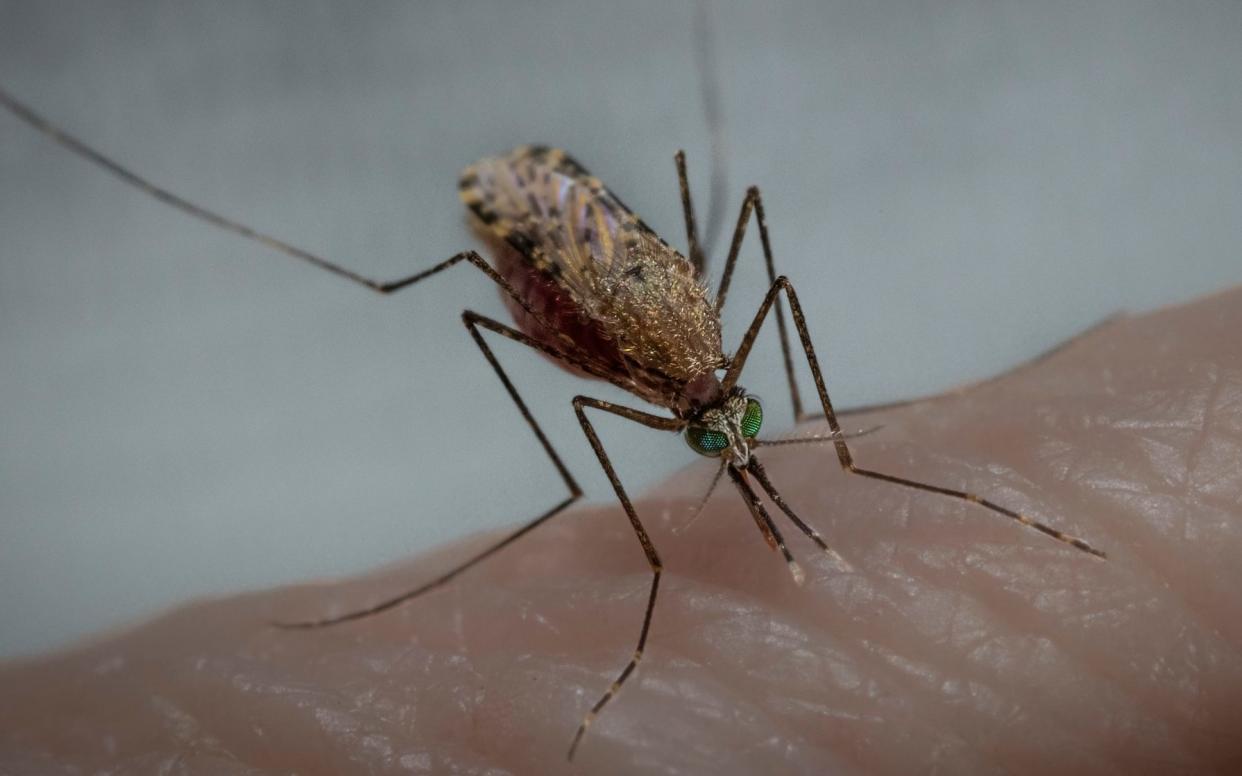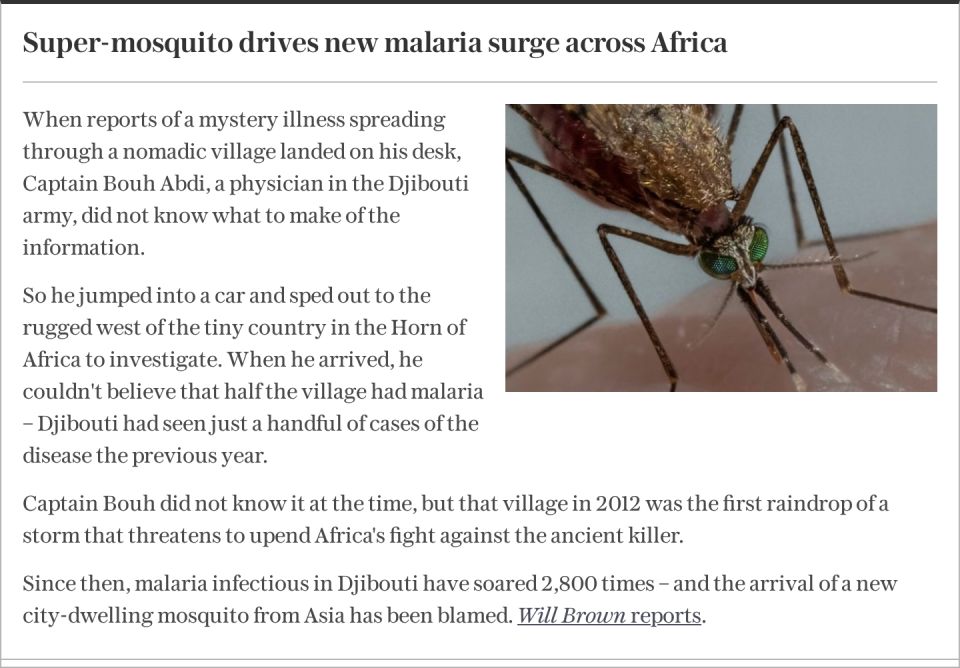‘Super mosquito’ driving malaria surge in Africa, study confirms

A “super mosquito” from Asia is driving an uptick in malaria across the Horn of Africa, scientists have confirmed for the first time.
In recent years, there has been speculation that the arrival of the Anopheles stephensi mosquito – native to parts of Asia and the Arabian peninsula – in at least five African countries could be behind an unexpected surge in malaria.
This increase has been dramatic and fast: in Djibouti, for instance, infections skyrocketed by 2,800 per cent in just eight years after the highly adaptable, city-loving super mosquito was first spotted in 2012.
But until now, the “impact of An. stephensi in malaria transmission in Africa has been anecdotal,” said Dr Luigi Sedda, an epidemiologist at Lancaster Medical School.
While experts theorised that the mosquito has played a major role – and the World Health Organization warned last December that it poses a “threat to malaria control and elimination” across Africa – no study had confirmed the link.
But in a new report, published in Nature Medicine, researchers tracked a specific outbreak in a university campus in Dire Dawa – a city in eastern Ethiopia, less than 150 miles from the border with Djibouti – and found the “strongest evidence to date” that the stephensi mosquito is driving urban malaria outbreaks in Africa.
The study revealed that in Dire Dawa, malaria cases increased 12-fold in the 2022 dry season, compared to 2019. To track the role played by the insect, researchers mapped where these bugs were living and compared that to the location of patients.

They also analysed which malaria parasites the insects were carrying, and found they were the same as the strains causing disease in people.
“We found a strong geographical and clinical interlink between An. stephensi and the [malaria parasite],” Dr Sedda, a co-author of the report, told the Telegraph. “This evidence is unique.”
Unlike the Anopheles gambiae, the most widespread carrier of malaria, the highly adaptable stephensi mosquito thrives in urban areas and breeds almost anywhere – in a dirty puddle between slum shacks, a rubbish dump, or even water in an abandoned car tyre.
It also survives in high temperatures in dry seasons, when malaria transmission usually lulls, and is resistant to many of the insecticides used to curb the parasitic disease.
“At the moment we don’t have a clear picture of the distribution of An. stephensi in Africa, apart from the Horn of Africa,” added Dr Sedda. Since it was first spotted in Djibouti in 2012, it has been found in Ethiopia, Sudan, Somalia, Nigeria and recently northern Kenya – but surveillance is patchy, making it difficult to assess its overall prevalence.
In the Nature article, researchers also found that the mosquito was carrying malaria parasites resistant to existing treatments and diagnostics.
This is a known problem in the Horn of Africa, but the high prevalence of resistance revealed in the paper demonstrates the urgent need to develop new drug formulations if there’s any hope of eliminating the disease.

“In terms of drug-resistant parasites, this is not new in Africa, but the discovery of a sustained transmission of drug-resistant parasites by a new vector is worryingly,” said Dr Sedda.
Despite huge progress since the millennium, malaria remains one of the world’s deadliest diseases. According to the latest report, it killed roughly 619,000 people in 2021 – a slight drop from 625,000 in 2020, but up from 568,000 before the Covid pandemic struck.
“Sadly, apart from the good news of the development and approval of the first malaria vaccine, more is needed in terms of new drug formulations,” said Dr Sedda. “Malaria elimination is stalled and more needs to be done to understand the bionomics, distribution and resistance of the malaria autochthonous and invasive mosquitoes and parasites.”
Dr Fitsum Tadesse, a malariologist at the London School of Hygiene and Tropical Medicine and co-author of the paper, added: “Given increasing reports of An. stephensi in Africa and the lack of urgency, the time window during which elimination of this mosquito from parts of the continent is possible is rapidly closing.”
Protect yourself and your family by learning more about Global Health Security

